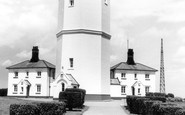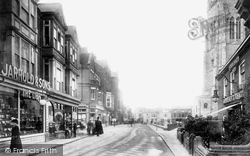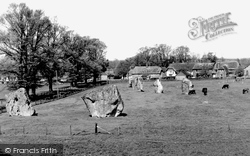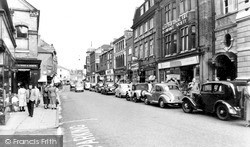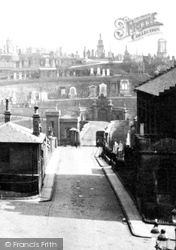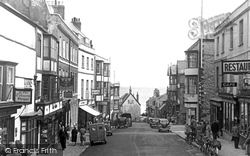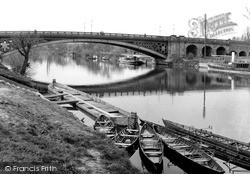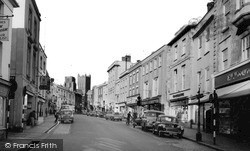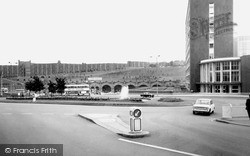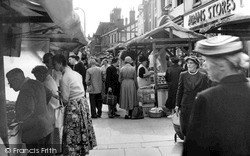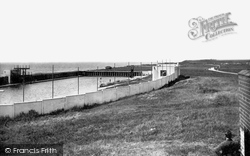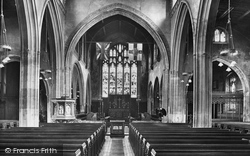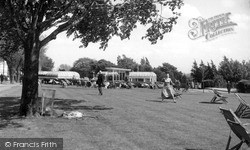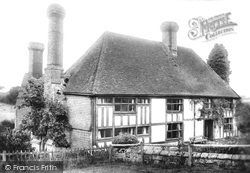Places
3 places found.
Those places high-lighted have photos. All locations may have maps, books and memories.
Photos
63 photos found. Showing results 1,361 to 63.
Maps
12 maps found.
Books
1 books found. Showing results 1,633 to 1.
Memories
7,556 memories found. Showing results 681 to 690.
Bowes Rd
I lived in Bowes Road from 1980 until 1985, when circumstances meant I had to move away, but I always have good memories of the area, as some of my best times were spent there. I had reason to return recently and I could not take in ...Read more
A memory of Palmers Green by
My Lost Youth
As a wee lad of 7 o r8, I had (I think) TB, my illness was called debility. My only memories are, an ambulance at my home in Walsall, my mom/dad waving and the tears, 2 nuns and then a hell of a long scary train ride. Margate was ...Read more
A memory of Broadstairs in 1954 by
Life In Bury For A Little Boy.
Millie Grinsted nee Cheeseman was my great aunt. She was the sister of my paternal grandfather William Edward Cheeseman. I remember staying with her and Edward at times during and after the war. I remember on one ...Read more
A memory of Bury in 1940 by
Charlwood Garage The Old Forge
We lived in a 400 year old cottage at the back of The Old Forge, later Charlwood Garage. My brother was born in the cottage in October 1965. I am trying to locate any photographs of the old house behind the forge or ...Read more
A memory of Charlwood in 1965
Early Childhood
Maiden name was Boyes, I lived at the Hass with my mum and dad and I had four brothers, they were Vyon, Morris, Graham and Leslie. I went to Wamphary School, we walked to school every day, my brother Leslie and me and my friend Evlin ...Read more
A memory of Wamphray in 1949 by
Our History In Brief
Although I had visited Hightown on many many occasions before this date to visit my Grandparents etc I particularly remember the days when myself and friends from Waterloo would visit Altcar Rifle Range to mark the ...Read more
A memory of Hightown in 1957 by
Wartime Evacuee 1939 1940
In August 1939 I was evacuated frm Salford to Caton. I had my gas mask, a small parcel of food and a label on my clothing. We arrived at the then beautiful station, adorned with flowers. Then we walked to the Village ...Read more
A memory of Caton in 1930 by
County Oak A23 Southdown Coach Station
The Coach Station had a cafe (or restaurant) backing a large parking area for London to Brighton Southdown Coaches. It was sited 100 yards south of the County border opposite "Overton's" Beehive workshop on the ...Read more
A memory of Crawley in 1950 by
Farraline Hall
Moved to Farraline Hall, Errogie in 1950 from Leeds. Dad was estate manager. Me and my brother Jeff and sister Jennifer in the back of a 7 ton flat lorry, sat on mattress under canvas in the back of it. I went to Errogie school, had to ...Read more
A memory of Errogie in 1950 by
Jtbells
This is the year I started on the building sites in 1963, I got a job on J. T. Bell's site in Whickam, the site hadn't been running long then as it was in the first stage. All the lads were mainly from Newburn, Lemington, and Throckley. If ...Read more
A memory of Newburn in 1963 by
Captions
2,471 captions found. Showing results 1,633 to 1,656.
By the time of this photograph Cromer had experienced a continuing building boom, which included new premises for fashionable stores such as Jarrold & Sons (left), who are still flourishing both in Cromer
The Avebury stone circle in Wiltshire is unique: modern village life and ancient stones live side by side in a common and mutual existence, where the past is indelibly a living part of the present.
This 1903 view looking south down the High Street is full of detail. It seems to have been taken one warm morning - note the open windows, and the summery dresses of the girls on the right.
The National Westminster Bank (extreme right) is next door to a seed merchant, still an important trader in a country town before seeds were brightly packaged and sold by garden centres.
By the beginning of the 17th century the centre of Glasgow had shifted south, to the foot of the High Street where it joined the Saltmarket.
Ye Olde Tobacco Shoppe (left) was the home of blacksmith Samuel Govier, who provided the artist James Abbott McNeill Whistler with a back room for his studio.
After the Second World War the business moved to the High Street, and made the most of Epsom's connections with the riding world. They supplied Nightingalls, Dullers, and other trainers.
From the bridge it was once possible to see a windmill built on a high bluff of rock above the river.
The National Westminster Bank (extreme right) is next door to a seed merchant, still an important trader in a country town before seeds were brightly packaged and sold by garden centres.
It was already happening in the 1980s, when Royal Mail cleared the wharves on the south side of the river at Kingston and developed the largest mechanised letter office in the United Kingdom.
Liptons the grocer's (left), a café from 1910 to the 1920s, is now Dixon's. Beside Liptons, the Pearl Assurance sign hides that of the Kings Head.
Harold George Howard Perhaps one of the most influential landowners in the 1920s was Harold George Howard.
Central areas of the city and old industrial districts are being repopulated. There could be as many as 5,000 new apartment homes in and around the city centre in the very near future.
When the Second World War broke out she was exempt from military service because she worked in a bank, taking the place of men who had enlisted.
of the dock.
Most of the best shops in Walsall are either in the town centre or situated on the edge; between them they pull in thousands of shoppers.
Many at the Admiralty still considered the new- fangled machine a shameful and un-British device.
Both Back Lane and the High Street were well supplied with inns: the Blue Bell, the White Hart, the Talbot, the Three Arrows, the Dolphin, the Rose.
During the 19th century the town centre had shifted westwards to the Bridge and Park Street.
They planned that the town would be a little way inland and separate from the dock area.
Close to the band stage and above the tree- covered cliffs are wide expanses of grass, ideal for picnics.
The route diverts briefly to the east side of the Quantocks to visit Dodington, a small and peaceful hamlet just north of the busy A39.
The spire, seen here from the back of the church, has been a landmark for mariners for centuries.
A few miles to the south of Goudhurst is Twissenden Manor, now a youth hostel. This half- timbered Wealden Hall House has a late 16th- century sandstone facade at the back.
Places (3)
Photos (63)
Memories (7556)
Books (1)
Maps (12)



